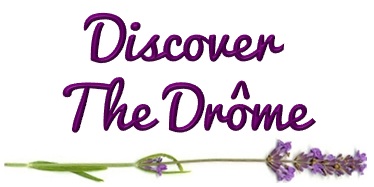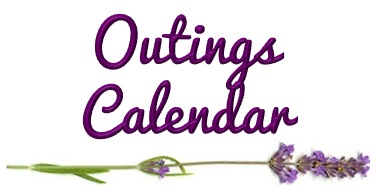
Nestling peacefully between the Provence, the Dauphiné, the Rhône Valley and the High Alps, you will find the Drôme Department, and the Voconces country. This scenic and historical territory lies at the very heart of Southeastern France.
Unlike its neighbouring regions, mass tourism is unknown in the Drôme, due to its intricate landscape, its wilderness, and limited tourism facilities. Authenticity and hospitality are key words to describe its character, together with a rich and ancient heritage, set in a remarkable natural landscape.
David, the travelling Bard, welcomes you to his homeland, to unveil all its secrets and traditions. Come and explore this hidden gem, its historical sites, outdoors sports and activities, good food and excellent wines. For a holiday to awaken all your senses!
Introducing the Drôme:
For the vast majority of tourists making their way down to the South of France, the Drôme Department is just a name they will hardly notice as they whizz by on the Motorway A7, driving through the Rhône Valley. Some will know this sign means they are just another few miles away from the renowned Provence region. Some more adventurous might take a detour to visit local landmarks mentioned in guide books, such as the Vercors Mountains, famous for its war time French Resistance and breathtaking road itineraries; the town of Romans, for its luxury shoe factories and outlets; Valence, the regional capital; Grignan, well known hilltop village and castle; or Montélimar, home of the famous Nougat sweet.
However, the Drôme is much more than a guide book selection of sites, chosen for their easy access and well established tourism industry. As it happens, we are happy the way things are!
The Drôme is largely unknown to mass tourism, and this is particularly true for the Drôme Valley itself, which stretches 110 km long (68 miles), and gave its name to this French Department. It includes three identifiable regions: The Diois, the Baronnies and the South Vercors. Only the discerning traveler will get to enjoy the medieval and picturesque towns of Crest, Saillans and Die. Their unequaled heritage sites are rarely mentioned in guide books, the press or the media. Isolation and small scale tourism facilities are the main reasons. The good side is - some would say the good fortune - you will find a true heaven of peace and tranquility, surrounded by outstanding natural sites, and a surprisingly rich heritage exceeding many other regions.
Most of our visitors arrive here by chance, and they keep coming back for more. That's a good sign!
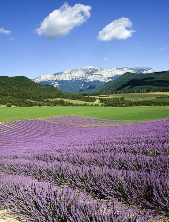
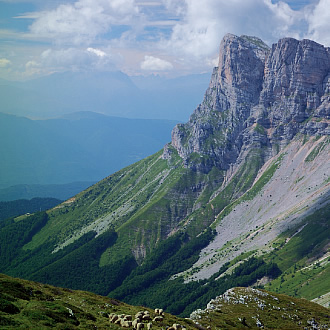
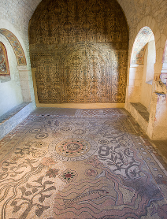
Our Assets…
The Drôme River Valley takes its source in the Alps, surrounded by sharp mountain tops and sheer cliffs, surrounded by lush alpine pastures. Although, for most of its course, it journeys through a typical Provence environment, blessed with a Mediterranean climate, lined with lavender fields, fruit trees and vineyards. Villages and small towns are also Mediterranean in style, with their narrow and shaded streets, old houses covered with Roman tiles, closely woven around their churches. The Drôme Valley, and the many other connecting valleys, cuts across a very rich natural environment: offering various habitats, from jutting mountains to wooded plateaus, gorges and enclosed basins.
The Climate
The climate is truly Mediterranean over the low lying plains and valleys. It is tempered around the more mountainous areas, giving pleasant micro-climates. The South of France summer can be scorching hot, but the Drôme Valley is cooled down to an enjoyable 23°C average (in the shade, or 75°F). Our winters are usually mild, with an average of 6°C (43°F), and occasional frosty mornings. On the surrounding mountain tops, the winter precipitations allow for snow to fall in reasonable amounts, pleasing all the ski enthusiasts! Just enough rainfall throughout the year for our rivers to flow, and a radiant sun that likes to spend his time here, 280 days per year!
Nature and the Great Outdoors
With an average of 25 inhabitants per square kilometer and 9 only for the Diois region, the population density is closer to the one in Norway than it is for the average in France! Together with small scale agriculture and herding, this leaves us with one of the wildest and unspoiled territories in the entire state. The air and water quality is among the cleanest on the continent, and the wildlife thrives around such a variety of biotopes, that it is rarely matched elsewhere in Europe. This is most verifiable in the Diois, and the Nature Reserve of the Vercors, the largest in France. With so much space, covering so many different landscapes, from 120 to 2453 metres in altitude (395 to 8048 feet), the Drôme is the perfect place for outdoor and sports activities. White river kayaking, hill walking, horse riding, cycling and mountain biking, rock climbing, potholing, paragliding, downhill or cross-country skiing, dog-sledding - and more - are all available within a short distance… So many ways to explore this remarkable region, and stay fit!
Nature and the Great Outdoors (click on the pictures to enlarge)
Cultural Heritage
The Drôme Valley, and its neighbouring regions, is a surprising time capsule. During the 16th and 17th centuries the French Wars of Religion were particularly violent here. And the many centuries of economical growth and prosperity, never truly recovered after, despite some efforts during the Industrial Revolution. Rural exodus, until very recent times, hindered progress and development to the benefit of larger towns and cities down in the Rhône Valley.
These reasons explain why you can journey through our valleys, and notice that nothing significant has changed over the last few centuries, in the way our villages and countryside appear today: from the medieval Tower of Crest (tallest keep in France), the feudal market town of Saillans, to the ancient Roman city of Die. This last one is especially interesting, a hidden treasure of France’s heritage. Die stands at the heart of the Voconces Country, a powerful Gaulish nation, and was built shortly after the Roman conquest, around 2000 years ago! It became an influential city within the Roman Empire, along the strategic itinerary across the Alps into Italy. The wall dates back to the 3rd century, and happens to be one of the best preserved in the Antic world.
If you also take into account the numerous sites dating back to the Neolithic - like the flint workshops on the Vercors, or the rock paintings near Boulc -, and the rich medieval heritage dating back to the powerful Bishops of Die and the Arnaud dynasty, you will discover a remarkably rich landscape. An unexpected discovery, a heritage widely unheard of, still in its original condition, which is patiently waiting to deliver all its secrets…
Biovallée ®: for a sustainable and better future
In the Drôme Valley and its tributaries, the way of life, and the way farmers work their land, has not been affected as much as other parts of France. The lie of the land also explains it, and modern techniques are not everywhere possible. In addition, a good handful of “neo-rurals”, escaping city life for a healthier way of living, have been attracted to the area since a good number of years. Bringing new concepts and trying out new ideas. Consequently, farming and herding is very environmentally friendly, and the locals do everything they can to keep it this way. Even small factories and workshops follow suit!
Having realised how unique and important these efforts were, as Europe and the world face great challenges ahead, a structure was brought together to encourage and promote local initiatives. Today, these efforts are rewarded, as the Drôme Valley has become an international reference in terms of organic farming and sustainable development. A new label, Biovallée ®, is there to promote and share our experience, to preserve the quality of our natural resources, and take advantage of eco-friendly sources of energy. The ancient Voconces territory has a biomass with a very rich biodiversity, and the challenge ahead is to preserve these resources, respectfully tapping in to them, to satisfy the population’s need for water, food, housing, energy, health, combined with a good cultural and social life also!
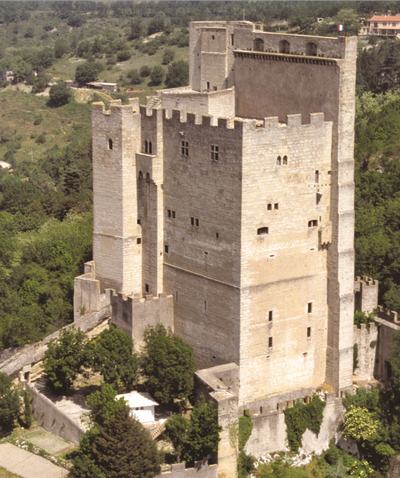
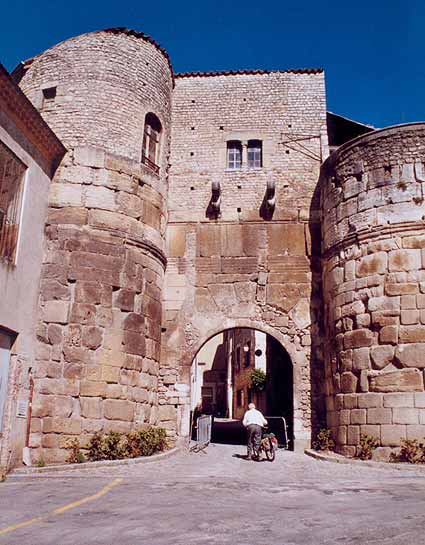
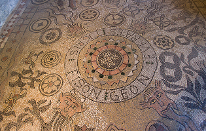
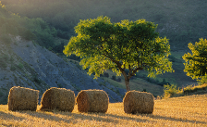
Cultural Heritage (click on the pictures to enlarge)
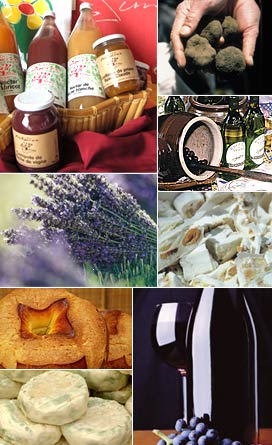


Arts, Crafts, Foods and Wines
Traditional open air markets take place in almost every town and village in the Drôme. For the Mediterraneans it is still very much part of their way of life, despite the shops and the supermarkets. It is a very lively and colourful event, bringing the community together, the shoppers and the local producers, the artisans and the farmers. It is a family outing that everyone enjoys, especially the chance to meet and buy directly from the gardener, the beekeeper, the cheese maker, or the leather craftsman…
The markets abound with so many colours and smells: fresh fruits and vegetables, traditional dried meats and farm cheeses, roasted poultry, local honeys or olive oils, local wines including the unrivalled “Clairette” – a naturally sweet, fruity and sparkling white wine -, beers from one of the many local micro-breweries, organic fruit juices, olives from Nyons, and the list goes on and on. From local workshops you will also find traditional pottery, china, leathers, wooden tools, soaps, wicker baskets, jewellery, furniture, walnut and olive oils, essential oils, sweets, gingerbreads…
For its exceptional quality of life, in a fabulous natural environment, the Drôme Valley’s has also attracted many artists. The peace and tranquillity, the friendly and open social fabric, is an ideal place to find inspiration and set up a workshop. They can be found scattered along the valleys, and their work can be seen in small galleries, in Tourist Offices, on the markets, or directly in their workshops. Painters, sculptors, photographers, writers, illustrators… Artists come in many disciplines and art forms. Some are quite famous; others are yet to be discovered!
However, performing artists represent a very strong and influential community: musicians and composers, singers and songwriters, actors and filmmakers, dancers, jugglers and acrobats, puppeteers, storytellers, fire-eaters... Street performances, concerts and shows happen on regular basis, in local theatres or piano-bars, during markets or in restaurants. The town of Die is also home to the one and only secondary school in France where students can take "circus arts" as an option! The town of Saillans is home to the theatrical group "Théâtre de Nuit", and the village of Eurre is home to the world famous "Trans Express" company. Evening and night entertainment is never an issue in the Drôme Valley, as one will always find a concert or a show to go to, summer or winter!
Arts, Crafts and Local Foods and Beverages (click on the pictures to enlarge)
Who is Andarta?
Our cultural and artistic society takes its name from the guardian goddess of the Voconces, a Gaulish nation during the Celtic times. Her name comes from the Celtic word Art, or Gaulish Artio, meaning the bear; an animal which represents strength, wisdom, and protection in the Celtic tradition. Closely associated with kingship, this name was often given to chieftains. Andarta is a female figure, and translates into the Great She-Bear, chosen by the Voconces as a guardian goddess. Nowhere in the Celtic realm can we found a similar cult to the She-Bear, which became part of the Voconces own identity.
Who were the Voconces?
The Voconces refer to a confederation of Gaulish tribes, established long before the Roman times. Their extended territory was found at the heart of Southeastern France. They belong to the “Celto-Ligurian” ethnic group found in this part of France, made up of Ligurian natives from Mediterranean stock, before merging with Celtic groups from central Europe during the Iron Age. Celtic culture, techniques, language and spirituality slowly took over, from about 800 years BC. The Celtic nations established in what is today’s France, Belgium, Luxembourg, parts of Switzerland and Northern Italy will be called Gaulish, speaking the same language derived from the original Celtic. They fought against the Roman Conquest which started out from Marseille, an ancient Greek colony on the Mediterranean, alongside other Gaulish nations.
The first Roman victory dates back to -125, and the Voconces were again defeated in -118 closer to home, in the Rhône Valley. Nonetheless, their own mountainous territory was easy to defend, and most tribes carried out attacks on the Roman armies. But the Romans had found the Drôme Valley being the best and easiest itinerary to take them across the Alps, from Italy to the Rhône Valley, and Lyon the capital of Roman Gaul. They needed to be at peace with the Voconces, so a particular Friendship Treaty was signed with their chieftains; a treaty which allowed the Voconces to retain their political and social autonomy, their traditional institutions, their laws, and their cult to Andarta. In exchange, the native ruling families allowed the Romans to build larger and better roads across their territory, where soldiers and goods between Gaul and Italy could transit safely.
This brought great wealth and prosperity to the region, and played a key role within the entire Roman Empire. A new town was built during the 1st century BC, at the heart of the Voconces country, which quickly became the new capital and a large city: the city of Die, where native ruling families had their assemblies. And along the road, many staging posts with their Inns, most importantly Darantiaca (today’s village of Saillans), or even a town built for retired Roman soldiers (today’s village of Aoust-sur-Sye). In the country side, you could find the villas of many rich landowners. Christianity arrived timidly, along with other new Roman imported cults. But when the first Barbarian raids started, pillaging across the Empire, the Christian community was quick to answer the needs of common people. The Bishop of Die acquired greater influence and authority from the 3rd century onward. He took the title of Bishop of the Voconces, and ended up sharing power with the ruling families.
After the definite fall of the Western Roman Empire in the 5th century, the Voconces territory was first conquered by a Germanic tribe called the Burgundians, then by the Francs. Later still, it went from the Kingdom of Provence to the Kingdom of Burgundy, and finally joined the Germanic Holy Roman Empire, following various alliances. Yet, and most importantly, throughout the entire Middle Ages, the Voconces people and their ruling families managed to renew their autonomous status with each passing overlord. Therefore they preserved a cultural and social unity, under the authority of the Earls and Bishops of Die. The Voconces finaly became part of France in the 15th century, although Louis XI will also grant some special entitlements to the nobles. Ergo, the Diois people can claim to a very long and traditional heritage that spans from the Iron Age right until the French Wars of Religion. Their culture, traditions and institutions having survived over 2000 years!
More Pictures... (click on the pictures to enlarge)
Our Regional Partners:


